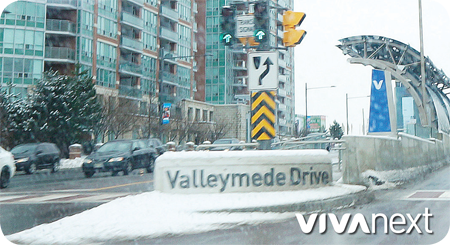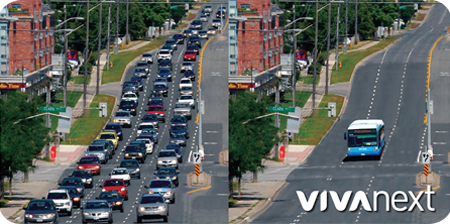Congestion in the GTHA is at an all-time high, with an additional 2.5 million people and one million more cars expected in the next 20 years, the problems will only get worse. We can no longer postpone building the kind of transit network that offers residents and commuters better transportation choices, eases congestion, connects them with jobs and travelling efficiently in all directions.
New transit lines connect most neighbourhoods and business districts, putting commuters within a short walk of rapid transit. The vivaNext project is a part of this overreaching transit network that will connect not only local but regional service once completed.
York Region Transit [YRT] conventional routes cater to local communities in all York Region municipalities and also include GO Shuttles and Express services. These routes stop frequently at the curbside of the road. Viva connects Markham, Richmond Hill, Vaughan, Aurora and Newmarket and also links York Region with Toronto and its subway system, GO Transit and the Region of Peel. It operates along major corridors much like an above-ground subway, for faster service. Once Viva service is running in its own rapidway, service will be even faster.
Transit planning takes time and includes: consultation with the users, route planning, bus scheduling and stop identification.
This year, YRT is holding stakeholder engagement meetings to discuss transit routes and overall service to prepare for the opening of the Toronto-York Spadina Subway Extension [TYSSE] in the City of Vaughan. The Subway is scheduled to open in 2016 and we want to be ready.
YRT\Viva is looking for your input at their public information meetings. We encourage you to come out to these events and learn how transit development will affect you in your daily commute and provide your input in what service and routes you want.
The vivaNext team will be there also, so join us for an in-depth look at different elements of vivaNext projects, plans, designs and ongoing activities or visit vivanext.com.










